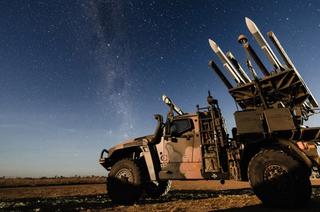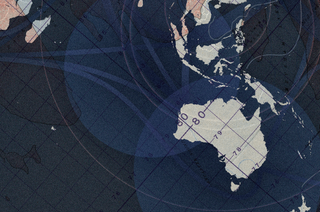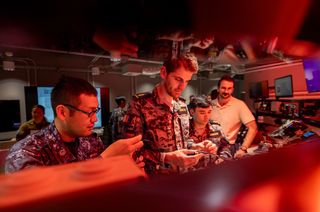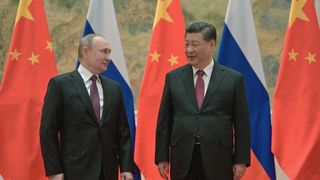Just one decade ago, it was common for observers of international politics to describe China as a lonely rising power.
It had many relationships of convenience but no genuine allies. It was the lack of the latter that convinced many in liberal democracies that this was our enduring and decisive advantage. Indeed, one could not think of another example in history where such a significant power had so few true friends and allies.
Fast forward to February 2022 when Xi Jinping and Vladimir Putin announced their “no limits” partnership just weeks before Russia invaded Ukraine. These two leaders have met more than 40 times across the past decade and the “no limits” framing has been used numerous times since the start of the Ukraine war.
Even so, many Western analysts remain sceptical that the relationship between China and Russia constitutes a strategic alliance in any meaningful sense. And many make even less of the broader grouping between China, Russia, Iran and North Korea, known as the CRINKs.
As the two most powerful countries, the China-Russia relationship is the one we ought to watch most closely. While it is not a formal alliance between two countries that still have notable disagreements simmering beneath the surface, we should be far more concerned about what Xi and Putin seek to achieve together than is currently the case.
Uneasy friends
Those arguing that there are significant limits to a China-Russia axis have something to work with. One might recall the spectacular falling out between supposed communist revolutionary brothers Mao Zedong and Nikita Khrushchev in the previous century over disagreements concerning ideological purity and who ought to lead the communist bloc.
A series of border skirmishes in 1968-69 almost escalated to large-scale conflict, with Moscow going so far as to issue nuclear threats against China’s then nascent nuclear facilities. This laid the foundation for Richard Nixon’s visit to China in 1972 in an American attempt to isolate the Soviet Union.
The frosty relationship between the two communist powers began to thaw only in the late 1980s, and by then the Soviet Union was beginning to disintegrate. Even now, some Chinese strategists openly question the wisdom of partnering with Russia given the 1950 alliance treaty lasted a mere 10 years.
In more recent times, the widening gap in material power and global influence between China and Russia is deeply discomforting for Putin.
This asymmetry has grown following Russia’s costly invasion of Ukraine. For example, in 2024, while trade with Russia constituted only 5.6 per cent of China’s total trade, China represented more than one-third of Russia’s. And while China’s GDP was more than four times larger than Russia’s in 2013, it had become six times larger in 2024. Following US and European bans on imports of Russia oil and gas in 2022, Chinese imports of both now represent about 20 per cent of Russian GDP.
From electronics and computer chips to machinery, Russia is now heavily dependent on Chinese imports. Indeed, there is an argument that China is the big winner from the ill-planned Russian invasion.
As with Xi, leverage is everything for Putin – and he has very little with China. Russia’s signing of a military assistance pact with North Korea goes beyond securing arms to sustain its war on Ukraine. It also gives Moscow some level of independent manoeuvre, and a relationship that could be used to leverage Beijing at a future time.
Some American hopes that Russia can be seduced back towards the Western camp at China’s expense may still be a fantasy. But Putin is hardwired to be no one’s pawn. Russia may have declared a no-limits partnership with China but Putin has no interest in becoming Beijing’s vassal and be gradually absorbed into a Sino-dominated future international order.
China’s hand of friendship
Despite lingering distrust between the two countries, China has been a good recent friend to Russia. It has played a crucial role in helping Russia remain in the fight against Ukraine. In doing so, Beijing is taking calculated risks.
One the one hand, it does not want to give Europe a reason to join a countervailing coalition with the US and others against Moscow. This is why Beijing claims it is pursuing an objective and impartial position on Ukraine, tries to deny or conceal any assistance it offers to Russia, and even positions itself as a peacemaker when it put forward a peace plan back in May 2024.
Yet China has gone further than some believed it ought to have in taking a side. Beijing’s support for Russia’s war effort has been gradually uncovered. This includes as the primary supplier of hi-tech dual-use items – ostensibly civilian with military applications – including navigation equipment, jamming devices, aircraft parts, rifles, semiconductors, chip-making equipment and spare parts, critical minerals key to gunpowder and explosives production, lithium-ion batteries and millions of light dual-use drones.
Currently, almost one-third of Russia’s external trade is settled in yuan, significantly reducing the reach of Western sanctions that target US dollar transactions.
Since 2024, Chinese ships have been implicated in the cutting of subsea cables in the Baltic Sea.
China has not openly opposed the deployment of 14,000 North Korean troops to fight alongside Russian counterparts in Kursk. North Korea has supplied about 40 per cent of Russian’s ammunition since August 2023 and sold or given Moscow multiple-launch rocket systems, long-range artillery and ballistic missiles. China has considerable means to pressure North Korea. But Beijing has done little to stop this North Korea flow of arms to Russia.
For the moment, the US and Europe have made it easy for China. Beijing has not paid any real price for its support for Russia.
What is the Chinese game plan? It is to assist Russia to remain in the fight against Ukraine and, by extension, the West. The Ukraine war, and Western assistance to the besieged country, drains the military and economic resources of US and Europe.
It keeps members of the Western alliance preoccupied and takes their focus away from northeast Asia. Not to mention that a central pillar of Chinese grand strategy is to divide our alliances. The protracted nature of the Ukraine war has exacerbated divisions within NATO on burden-sharing.
In short, the past few years have played out well for China. Distrusted friend Russia has become even more dependent on China, strengthening Beijing’s ability to call the shots in the bilateral relationship. China now controls the flow of industrial goods and technology Russia desperately needs. With Russian troops in the Far East redeployed to fight in Ukraine, China no longer needs to worry about securing its long 4200km border with Russia.
Helping Russia sustain the violence leaves both friends and adversaries weaker in a material sense and strategically preoccupied or else distracted. It is just the way China likes it.
Strategic effects
True, China and Russia are not allies. The China-Russia “no limits” partnership does not include a formal mutual defence pact. But it is the negative strategic effects of their pragmatic axis that ought to worry us.
This is especially so as we approach Xi’s 2027 deadline for the People’s Liberation Army to be ready to invade Taiwan. Recently, Xi reiterated that “the historical trend toward China’s ultimate and inevitable reunification is unstoppable”. As he has said numerous times, using force remains an option, even more so if Chinese military advantages over potential adversaries in a Taiwan contingency continue to grow.
In war over Taiwan, and because of the partnership with Russia, China has additional strategic options that were not available several years ago.
Beijing no longer needs to maintain a large military presence on the Sino-Russian border, freeing them up for Taiwan Strait missions. Russia’s newest ballistic missile submarines are deployed in the Far East, close to Alaska and the northern waters of Japan. US and Japanese forces can no longer afford to ignore Russia’s Pacific fleet, splitting forces that could be used in the primary theatre of the Taiwan Strait.
Crucially, Russia would be the key land-based supplier of critical inputs for Beijing’s war machine such as military parts, equipment and energy.
This is especially important given that China must prepare for a possible US and allied naval blockade of the Malacca Strait to deny energy supplies from the Middle East reaching China.
One has not even considered North Korea. North Korea could use a Taiwan contingency to advance its own interests. Or it might agree to conduct missions against South Korea, further straining and dividing US and allied military assets.
The CRINKs often are derided as a motley crew of bickering countries and far short of an axis of authoritarian states.
Meanwhile, the democracies have belatedly woken up to the dangers of this age and are all focused on deterrence. But that needs military power. And this is where the CRINKS have one advantage. Unlike us, they are well advanced in preparing for war and have shown an inclination to assist each other in the conduct of it.






